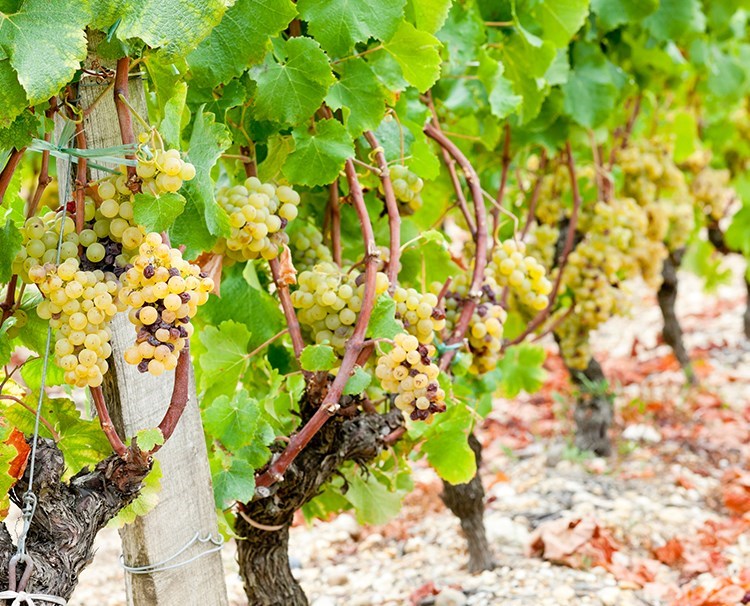Sauternes is a product of Sémillon, Sauvignon blanc and Muscadelle grapes – along with arduous labor and meticulous care. Taste this delicious wine for yourself on an included excursion, available during our Taste of Bordeaux itinerary. Common flavor notes include apricots, honey, peaches, and a rich nuttiness. Although sweet, it pairs perfectly with savory flavors, relishing with the contrast. Foie gras is a classic match. But vintners recommend everything from peppery-flavored Asian cuisine to Roquefort terrine to red meat to chicken and even to crunchy french fries. The goal is to bring out as many nuances as possible with flavors and textures that can stand up to it. Dishes that are creamy (high-fat cheeses and cream-based sauces), salty (cured meats and ham), briny (lobster and other seafood), mineral (oysters), acidic (citrus) and spicy (chiles) are a delicious start.

A Selective Harvest
The vintage typically starts out with a golden, yellow color that becomes progressively darker as it ages – and the finish can resonate on the palate for several minutes. Damp, cool weather conditions prevail in the Sauternes region. Cool, misty mornings give way to warm, sunny afternoons. Nestled along the Garonne and Ciron Rivers, it’s the perfect microclimate to encourage grapes to over-ripen, letting them shrivel virtually into raisins and enhance their sweet flavors. Yields are much lower here, as these grapes do not develop at even rates and so the fermentation is much more elusive, with harvesters having to hand-select the fruit. This, of course, drives up the price and explains why Sauternes wines are often associated with luxury and special occasions. While a typical grape vine may produce a bottle of wine, it takes an entire vine to create a glass of Sauternes.
A Friendly Fungus

The not-so-sweet sounding explanation for this wine's complexity? A fabled fungus called Botrytis Cinerea (aka noble rot). Long ago, it was a closely guarded secret that these wines were created using rotted grapes, but this fungus is what wine aficionados call ‘friendly.’ It works the grape into a state of dehydration, concentrating the sugar and acidity and thus producing its sweet, honeyed flavor. These decadent wines can age for decades and even have the potential to age well beyond 100 years.
The Turn to White Wine
Like most of France, wine production – or viticulture – is believed to have been introduced by the Romans during the Roman Empire. However, sweet wine production didn’t begin until many centuries later, in about the 1600s. Until that time, the demand for French wines were of red claret. White wines were popular in Germany (and the Netherlands), but as German production waned in favor of beer, connoisseurs of white grapes looked towards France. The Dutch introduced German white wine techniques – by the end of the 18th century, Sauternes wines were internationally known and finding fame amongst new continents. Thomas Jefferson was an avid fan and introduced the sweet vintage to then-President George Washington.
Toast with this sweet wine to more celebrations while sailing on our Taste of Bordeaux itinerary.